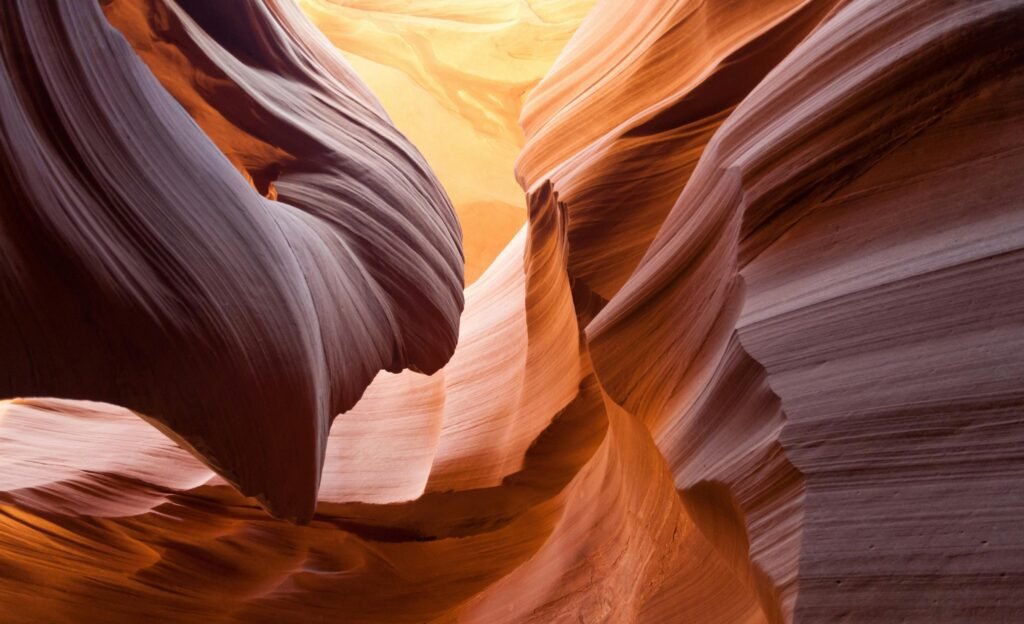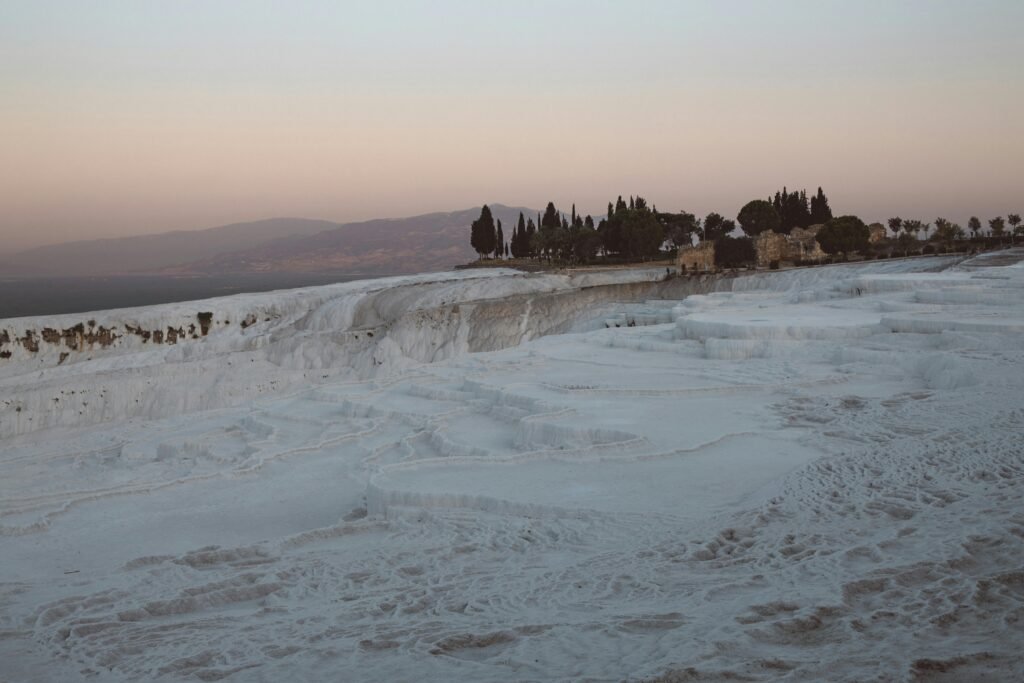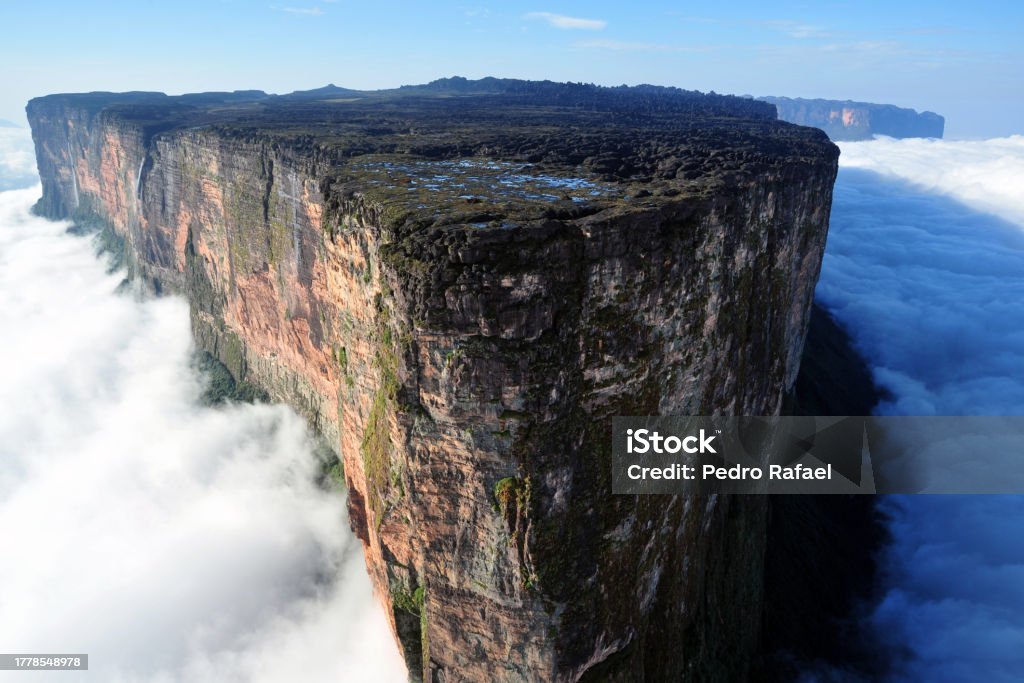Introduction to Otherworldly Places
Throughout history, certain locations on Earth have captured the imagination of travelers and explorers, leaving them with the unique sensation of being transported to another planet. These otherworldly places, characterized by their striking natural wonders and extraordinary human-made structures, evoke feelings of awe and fascination. The combination of these elements creates an atmosphere that is both surreal and enchanting, allowing visitors to escape the mundane and immerse themselves in landscapes that seem to exist beyond the realm of reality.

The concept of otherworldliness often springs from extreme geological formations, vibrant colors, and unusual topographies that challenge one’s perception of traditional landscapes. Places such as the vast salt flats of Bolivia or the towering spires of Cappadocia showcase nature’s unparalleled artistry while stirring a sense of curiosity and wonder. The contrasting hues of the Badlands in South Dakota or the ethereal glow of the Northern Lights demonstrate how the natural world can resemble imaginative depictions of distant planets, encouraging a deep appreciation for the diverse beauty of our planet.
Moreover, human creations can enhance this alien ambiance, as architectural marvels blend harmoniously with their surroundings or stand in stark contrast to the natural elements that surround them. Structures such as the surreal formations in Antelope Canyon or the iconic shapes of the Paro Taktsang monastery in Bhutan exemplify the blending of human ingenuity with the raw power of nature. This synergy not only amplifies the otherworldly experience but also invites reflection on the relationship between humanity and the environment.
In the following sections, we will explore ten remarkable locations that embody the essence of being on another planet. These sites reveal the astounding diversity our world has to offer and highlight the fusion of nature and architecture that captivates so many.
The Salar de Uyuni, Bolivia
The Salar de Uyuni is a vast expanse of salt flats located in southwest Bolivia, covering over 10,000 square kilometers. Often considered one of the most mesmerizing places on Earth, the Salar showcases an otherworldly landscape that evokes feelings of being on another planet. During the dry season, the salt crust resembles an infinite white blanket, stretching as far as the eye can see. In contrast, during the rainy season, the flats transform into a gigantic mirror, perfectly reflecting the sky and creating stunning visual illusions.

The geological significance of Salar de Uyuni cannot be overstated. This extraordinary salt flat is formed from the remnants of ancient lakes that once existed in the region, particularly Lake Poopó and Lake Minchin. These lakes dried up over thousands of years, leaving behind a thick crust of salt composed primarily of sodium chloride, along with other minerals such as lithium. Currently, Salar de Uyuni is the world’s largest reserve of lithium, a crucial component in batteries, which adds an element of economic importance to this unique environment.
Wildlife in the area is surprisingly diverse, including various species of flamingos that inhabit the surrounding lagoons. These striking birds feed on the abundant microfauna found in the water, showcasing the delicate balance of ecosystem present within this arid environment. The Salar is also culturally significant, as it is situated in the heart of the Andean culture, with several indigenous communities, such as the Uros and Aymara, living in proximity to the salt flats. Their cultural practices and traditions are intricately linked to the landscape, further enriching the experience of this otherworldly destination.
Antelope Canyon, Arizona, USA
Antelope Canyon, nestled within the Navajo Nation near Page, Arizona, is one of the most extraordinary geographical formations in the world, often evoking comparisons to another planet. The canyon is renowned for its narrow passageways that have been sculpted by centuries of erosion, primarily from water and wind. This continuous natural process has resulted in smooth, flowing curves and surreal shapes that can leave visitors in awe. Walking through these passageways feels like being transported into an otherworldly landscape.

As light filters through the narrow openings of the canyon, it creates a mesmerizing spectacle of colors that range from deep reds and oranges to brilliant purples and blues. The interplay of light and shadow against the canyon walls produces dynamic visual effects that captivate photographers and nature lovers alike. The optimal time to experience this breathtaking beauty is during mid-day when the sun is at its highest, illuminating the canyon’s interior more dramatically. Visitors may feel as if they have stepped onto a different planet, with the swirling colors and intricate designs forming an environment that is both alien and beautiful.
The Navajo heritage is deeply intertwined with Antelope Canyon, adding layers of cultural significance to the natural wonder. The canyon, known as “Tsé bighánílini” in Navajo, translates to “the place where water runs through rocks.” This name reflects its geological formation and highlights the importance of water in this arid region. The canyon is not only a remarkable natural structure but also a sacred site, resonating with the spiritual beliefs and traditions of the Navajo people. As visitors explore its depths, they connect with both the awe-inspiring geology and the rich cultural history that defines Antelope Canyon, making it a truly unique earthly experience.
The Giant’s Causeway, Northern Ireland
The Giant’s Causeway is an extraordinary natural wonder located along the rugged coastline of Northern Ireland. Renowned for its approximately 40,000 interlocking basalt columns, this UNESCO World Heritage site was formed millions of years ago as a result of intense volcanic activity. The unique geological phenomenon showcases a landscape that appears almost alien in its architecture, captivating visitors with its striking symmetry and intriguing form.
Each column stands like a natural pillar, varying in height, shape, and structure, contributing to the overall otherworldly aesthetic of the Causeway. Some columns are as tall as 12 meters, while others are shorter yet equally captivating. The harmonious arrangement of these formations leads many to marvel at the intersection of geology and artistry, creating a scene that feels surreal and evocative of another planet.

In addition to its geological significance, the Giant’s Causeway is steeped in mythology. According to legend, the site was constructed by the giant Finn McCool as a pathway to confront a rival giant from Scotland. This myth lends an air of enchantment to the location, further enhancing its allure as a destination that transcends the ordinary. Visitors often find themselves immersed in the stories and folklore that surround the area, making their experience richer and more engaging.
The Causeway’s proximity to the Atlantic Ocean adds to its dramatic scenery, with waves crashing against the rocks, creating a symphony of sound that harmonizes with the visual spectacle. The interplay of sunlight and shadow across the columns throughout the day transforms the landscape, making it feel alive and ever-changing. This combination of natural beauty and mythic narrative positions the Giant’s Causeway not just as a captivating geological site, but as a place that resonates deeply with those seeking an experience that feels distinctly out of this world.
Pamukkale, Turkey
Pamukkale, often referred to as the “Cotton Castle,” is a remarkable natural wonder located in southwestern Turkey. This UNESCO World Heritage Site is renowned for its stunning white travertine terraces, which have been formed over thousands of years by the deposition of calcium carbonate from the region’s mineral-rich thermal waters. The terraces create a surreal landscape that appears almost otherworldly, making it a popular destination for tourists seeking both beauty and relaxation.

The terraces at Pamukkale are not only visually striking but also renowned for their health benefits. Visitors are drawn to the warm waters that flow down the terraces, which are believed to have therapeutic properties. Historically, the hot springs were used by the ancients for their healing qualities, attracting people seeking relief from various ailments. This connection to health and wellness adds a layer of significance to Pamukkale, enhancing its appeal as a travel destination.
Adjacent to Pamukkale is the ancient city of Hierapolis, which dates back to the 2nd century BCE. Hierapolis boasts a rich history, evidenced by its well-preserved ruins, including a vast necropolis, impressive theater, and various temples. The thermal springs played a crucial role in the development of this ancient city, providing both water and a social hub for its residents. The blend of natural beauty and human history at Pamukkale serves as a testament to the enduring connection between culture and the environment.
As visitors explore the terraces and the ancient remnants of Hierapolis, they are treated to a unique experience that transcends mere sightseeing. Each step through this landscape is a journey through time, showcasing the harmonious relationship between nature and human ingenuity. If you seek a destination that offers a mix of breathtaking beauty and historical significance, Pamukkale is undoubtedly a place that feels like another planet.
The Wave, Arizona, USA
Located in the Paria Canyon-Vermilion Cliffs Wilderness of Arizona, The Wave is a mesmerizing rock formation that exemplifies nature’s artistry. This iconic site is renowned for its undulating patterns and vibrant colors, which seem to swirl and curl like a painter’s brush strokes against the vast desert backdrop. The striations of red, orange, and cream blend seamlessly, creating a breathtaking landscape that feels utterly otherworldly. The uniqueness of The Wave attracts many nature enthusiasts, photographers, and hikers from all corners of the globe, seeking to view its stunning geological features.

The formation of The Wave is a result of arduous geological processes, primarily driven by wind and water erosion. Over thousands of years, these elements have sculpted the sandstone into intricate shapes, providing visitors with an almost surreal experience. The soft, flowing lines and vibrant hues evoke a landscape reminiscent of another planet, leaving a lasting impression on those who tread upon its surface. The surreal quality of The Wave lies not just in its physical attributes, but also in the surrounding area, wherein the landscape unfolds in a display of contrasting textures and colors.
Visiting The Wave, however, is not as simple as it may seem. The site is subject to strict access regulations, ensuring its preservation and minimizing environmental impact. A limited number of permits are issued daily, adding an air of exclusivity to this already astounding locale. For those fortunate enough to secure a permit, the journey to reach The Wave often includes a challenging hike through rugged terrain. This combination of accessibility restrictions and breathtaking natural beauty solidifies The Wave’s status as an experience that is truly out of this world.
Mount Roraima, Venezuela
Mount Roraima, a remarkable tabletop mountain situated at the convergence of Venezuela, Brazil, and Guyana, captures the imagination of many due to its unique geological features and intriguing ecosystems. Rising dramatically from the surrounding landscape, its sheer cliffs soar to heights of over 2,800 meters, creating a sense of isolation that contributes to its otherworldly allure. The mountain’s flat-topped summit covers an area of approximately 31 square kilometers, resembling a vast island rising above a sea of clouds. This immense presence fuels numerous myths and legends among the indigenous Pemon people, who believe that Mount Roraima is the site of the world’s creation, populated with extraordinary flora and fauna found nowhere else on Earth.

The unique climatic conditions of Mount Roraima foster a rich and diverse range of plant and animal life, many of which are endemic to the region. The isolation of this natural fortress has led to evolutionary adaptations that can feel alien to those who visit. Among the notable species are fascinating carnivorous plants such as the Heliamphora and unique orchids, which thrive amidst the unusual sandstone terrain. This rare biodiversity makes climbing Mount Roraima a captivating experience, as climbers encounter environments so distinct from others they may have visited. The landscape includes breathtaking waterfalls, intriguing rock formations, and wide plateaus that can evoke the sensation of being on another planet.
For those adventurous enough to trek to the summit, the journey itself is a transformative experience. Hikers share stories of navigating the lush rainforest, traversing rocky outcrops, and marveling at the vast vistas that unfold before them as they approach the top. The feeling of stepping onto the plateau of Mount Roraima is often described as surreal, inviting introspection and wonder. This combination of dramatic environments, rich mythology, and extraordinary ecosystems solidifies Mount Roraima’s reputation as one of Earth’s most extraordinary locations, offering an experience akin to traveling to another world.
The Blue Lagoon, Iceland
The Blue Lagoon in Iceland is an extraordinary geothermal spa that offers an otherworldly experience against a backdrop of rugged lava fields. Renowned for its bright blue waters, this iconic destination has become synonymous with relaxation and rejuvenation. The lagoon is situated in a dramatic volcanic landscape, presenting bathers with a stunning contrast between the vivid azure of the water and the dark, jagged lava rock surrounding it.
One of the primary attractions of the Blue Lagoon is its mineral-rich waters, heated naturally by geothermal activity beneath the Earth’s surface. The water is infused with silica, algae, and minerals, all of which are believed to have therapeutic properties. Visitors often seek out the Blue Lagoon for its reputed healing attributes; these include enhanced skin conditions, improved circulation, and overall wellness benefits. Many guests emerge from a soak feeling rejuvenated, as though they have experienced a restorative treatment in a natural spa.

The surreal atmosphere of the Blue Lagoon adds to its charm. Bathers float in the warm water while steam rises around them, creating an ethereal ambiance reminiscent of another planet. This unique thermal experience is further elevated by the changing moods of Iceland’s weather, with occasional snowfall or rain adding to the magical atmosphere. The surroundings are filled with tranquility, allowing visitors to disconnect from the outside world and immerse themselves in the serene environment.
In addition to the natural beauty and wellness options, the Blue Lagoon also features modern amenities. Visitors can indulge in spa treatments, dine at on-site restaurants, and enjoy the stunning views from relaxation areas. All of these elements combine to make the Blue Lagoon not just a destination, but a breathtaking experience that feels truly otherworldly.
La Boca, Buenos Aires, Argentina
La Boca is a neighborhood in Buenos Aires that stands out for its vibrant colors and unique artistic expressions, creating an atmosphere that feels almost extraterrestrial. Known for its striking structures and vivid facades, this lively district draws visitors and artists from around the globe, eager to experience its charm. The architectural style of La Boca is heavily influenced by European immigrants, particularly those from Italy and Spain, who settled in the area in the late 19th and early 20th centuries.

As one strolls through the streets of La Boca, it becomes evident that the colorful buildings are not just a visual feast; they are a manifestation of the neighborhood’s rich cultural heritage. The use of bright hues, such as turquoise, yellows, and reds, is not merely for decoration but serves as a symbol of the local identity. This vibrant palette, combined with the artistic murals adorning nearly every surface, gives La Boca its distinctive flair. Each artwork tells a story, reflecting the everyday life and struggles of the residents while weaving a tapestry of creativity and resilience.
The area is also famed for its open-air tango performances, where locals passionately dance in the streets, adding further to the extraterrestrial vibe. Visitors are often invited to join in, immersing themselves in the local culture and even learning the basics of tango, creating unforgettable memories. Furthermore, the picturesque Caminito Street, with its narrow lane and eclectic shops, showcases local artisans selling their crafts, paintings, and handmade goods. La Boca’s energy is contagious, and its unique atmosphere ensures that it truly feels like a different world, enriching the cultural landscape of Buenos Aires.
The Caves of Nerja, Spain
The Caves of Nerja, located on the Costa del Sol in southern Spain, present a mesmerizing landscape that evokes the feeling of stepping onto another planet. Known for their stunning stalactites and stalagmites, these impressive caverns stretch over 4,800 meters and have a unique geological structure that has captured the imagination of visitors for centuries. The formations, sculpted over millions of years through natural processes, offer a surreal and otherworldly appearance, making them a prime example of nature’s artistry.

These caves not only showcase remarkable geological features but also provide insight into ancient human history. The presence of paleolithic cave paintings, some dating back to as early as 25,000 years ago, draws connections to early human civilizations. These paintings serve as a reminder of our ancestors’ existence and their artistic expression, further enhancing the caves’ mysterious aura. The juxtaposition of the ancient and the natural creates an environment that feels somewhat alien, allowing visitors to contemplate the history of humanity within the context of an extraordinary natural wonder.
One of the most notable aspects of the Caves of Nerja is their incredible acoustics. The chambers within the caves have been found to amplify sound in uniquely captivating ways, leading to the location’s use as a venue for concerts and cultural events. This element of sound adds an ethereal quality that enhances the cave’s charm and otherworldly experience. Many who enter the caves emerge with a deeper appreciation for the natural beauty and historical significance of this site, which continues to intrigue scientists, historians, and tourists alike. The Caves of Nerja serve as a poignant reminder of the link between humanity and the wonders of nature, securing their status as a significant attraction that seems to echo with the whispers of the past.
